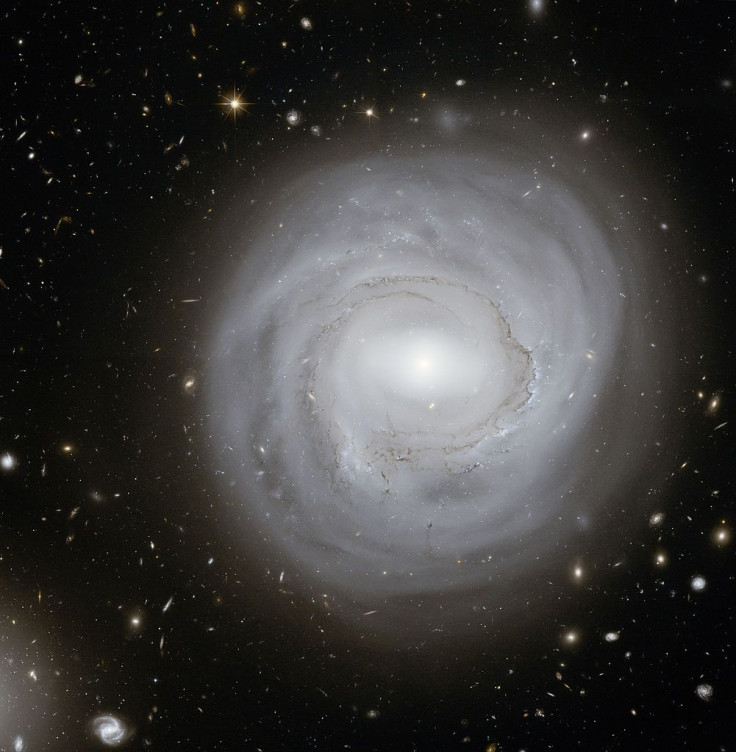'Ghostly Galaxy' Mystery: 'Anemic' Galaxy May Be 'Living Fossil' From Universe's Creation [PHOTOS]

A "ghostly" and "anemic" galaxy believed to be a "living fossil" from the birth of the universe has left scientists baffled.
Discovered in 2016, the DGSAT I is described to be a "ghost-like" galaxy because it is transparent and gives off very little starlight despite being as massive as a typical galaxy. It has been classified as an ultra-diffuse galaxy (UDG) due to its extremely low luminosity, but DGSAT I has fascinated researchers as it contradicts what they know about UDGs.
All previously observed UDGs were found in crowded, roiling galaxy clusters. This led scientists to believe that UDGs used to be "normal" galaxies, but they became "ghost-like" after being blasted by violent collisions within the cluster.
But according to a study published online in the Monthly Notices of the Royal Astronomical Society, the ghostly galaxy is not within a cluster, making astronomers rethink their initial theory on the formation of UDGs. Without any violent events possibly affecting it, the DGSAT I has remained untouched and likely changed very little since its birth, according to a statement from the W. M. Keck Observatory in Hawaii.
This Ghostly Galaxy May Be a 'Living Fossil' from the Dawn of the Universe https://t.co/gNtpS4ruq3 pic.twitter.com/bV36U0BlN3
— Live Science (@LiveScience) March 8, 2019
To understand how it was formed, researchers first tried to find out its chemical makeup.
"The chemical composition of a galaxy provides a record of the ambient conditions when it was formed, like the way that trace elements in the human body can reveal a lifetime of eating habits and exposure to pollutants," co-author Aaron Romanowsky, a UCO astronomer and Associate Professor of the Physics and Astronomy Department at San José State University, said.
Using the Keck Cosmic Web Imager, a light-measuring spectroscope installed on Hawaii's Mauna Kea, the team of astronomers found that DGSAT I is "anemic" as it contains very little iron content, but it also has normal magnesium levels. The former discovery makes it seem as if DGSAT I was created from a nearly pristine gas cloud that had not been tainted by supernovas, but the second finding contradicts this.
Younger, modern galaxies usually have more iron, magnesium and other heavy elements compared to the ancient ones born just after the Big Bang. Astronomers found this unusual as both iron and magnesium are produced during supernova events, so it is strange to find one without the other.
"We don't understand this combination of pollutants, but one of our ideas is that extreme blasts of supernovae caused the galaxy to pulsate in size during its adolescence, in a way that retains magnesium preferentially to iron," Romanowsky said.
According to their findings, DGSAT I had taken billions of years to form. The process may have begun during the early years of the universe and continued on until about 3 billion years ago.
"One intriguing possibility is that some of these ghostly galaxies are living fossils from the dawn of the universe when stars and galaxies emerged in a much different environment than today," said Romanowsky. "Their birth is truly a fascinating mystery that our team is working on solving."
© Copyright IBTimes 2025. All rights reserved.





















